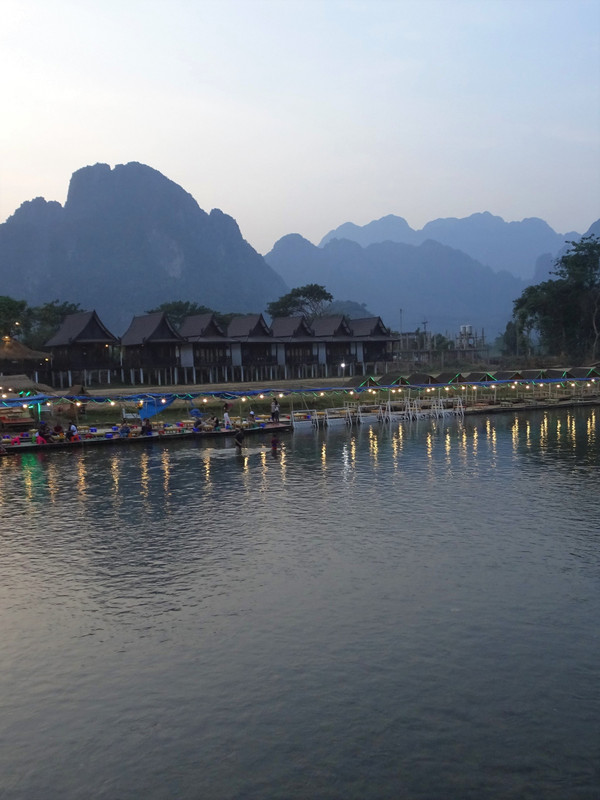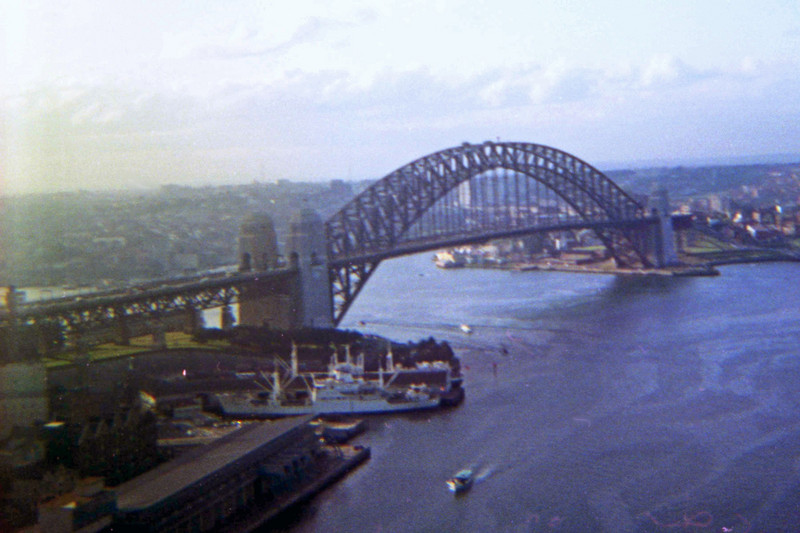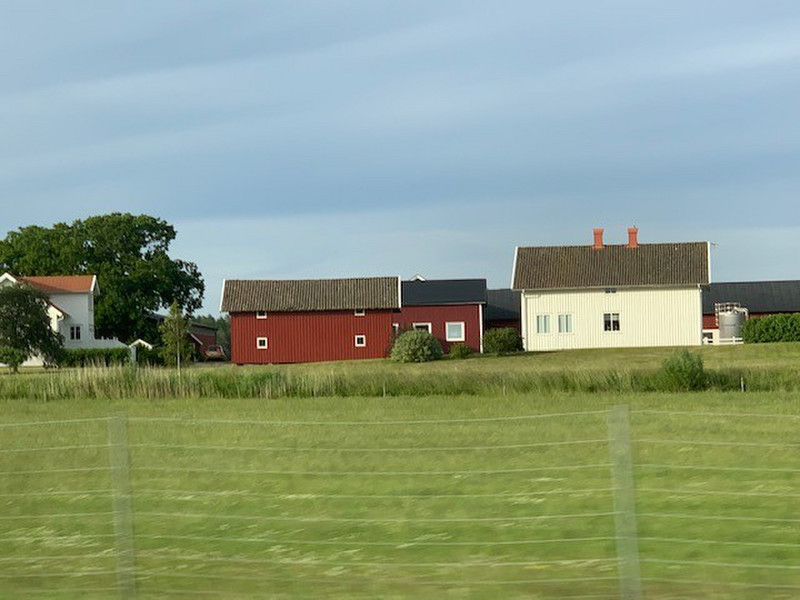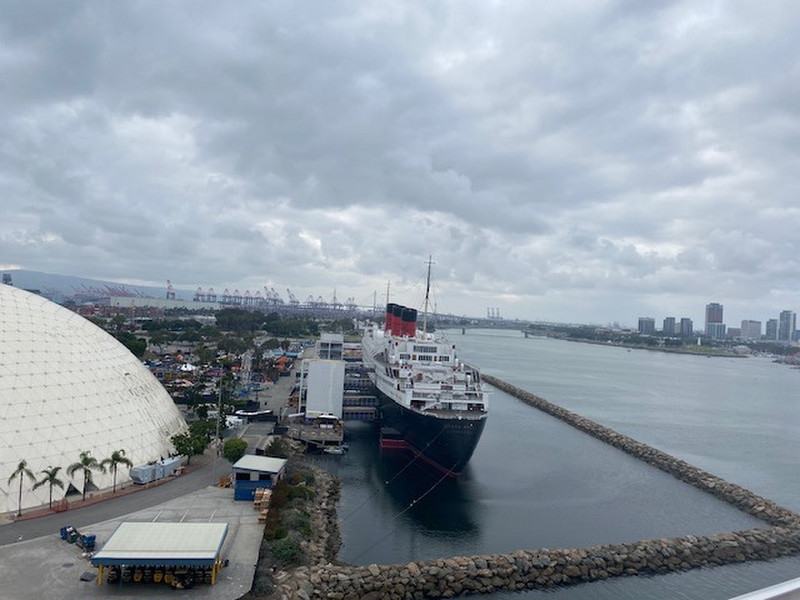After bearing witness to monks collecting alms from devotees (and tourists) in the old city centre of Luang Prabang, we made our way back to Hotel Legend in darkness to finalise our packs and prepare for a gruelling seven hour road trip to Vang Vieng. We settled in the hotels dining area around 7am, where I enjoyed a reasonably simple breakfast of muesli, omelette, tea, toast and jam, along with a couple of glasses of the ubiquitous orange cordial that is a of every Thai and Laos breakfast buffet.
After a quick trip in a songthaew (a converted truck with benches down either side) to a guest house outside the old city centre, we loaded our packs into a large minibus and headed off to Vang Vieng at 8:45am. It didnt take long to get out of Luang Prabang – within 10 minutes we were driving through rural villages on the outskirts of the city, and not long after that we were driving on steep, bumpy mountain roads.
and one had dissected by the Railway Project. An unsightly gash had been carved through the settlement, and this scar stopped short at two huge concrete pylons jutting out of a nearby river. The rail tracks were yet to be laid, and I couldnt help but wonder how life will be changed forever when high speed trains zoom through the village and break the mountain silence that has prevailed for so long – shaking each tiny wooden dwelling to its core. However, I think Im being overly romantic here. Maybe the villagers will embrace the ensuing benefits that Chinas global progress will bring them.
The further we climbed into the mountains, the worse the roads became. They became narrower, windier and bumpier. The steep drops to the right side were daunting, with absolutely nothing in place to protect wayward vehicles and their occupants from plummeting down the mountain slopes. There were times (on steeper sections of the road) when I thought the minibus would grind to a standstill. However, right at the last moment the driver would change back a gear, and we would all lurch forward with the engines new found torque.
haze spread to the horizon, which significantly reduced our visibility of the surrounding mountain vista – I could barely make a discernible outline of their key features. There were plenty of large trucks on the road, and there wasnt a lot of room when we passed them on tight corners. A disconcerting rubbing noise from under the chassis of the minibus, and I hoped with all my heart that it wasnt the brakes succumbing to overuse
Every so often the road changed from bitumen to rough dirt, which slowed our journey considerably. Tiny Hmong villages subsisted on the roadside, where wooden huts sat on diminutive plots of habitable land on the sheer mountain slopes. As the road became progressively worse, the drops to the right side became steeper, and I wondered what daily life was like in such a precipitous and exposed roadside community.
There was a moment during this mountainous journey where – in my overly vivid imagination – I had an unwilling participant in an episode of Worlds Most Dangerous Roads. The drops to the side were sheer, the road was rubble and large trucks spewing black diesel smoke were pushing our
minibus to the very verge. I any form of foliage on the right side of the road, because it hid from view what lay below. The Be Careful of Accident signs certainly didnt help!
After a quick toilet stop at a roadside caf, we continued our mountain crossing to Vang Vieng. As we climbed further, the haze began to lift in the sky, and the extent of deforestation on the breathtaking slopes around us became all too apparent. These grotesque scars can only be seen when the pervasive mist enshrouding the mountains suddenly lifts. What an ironic twist of nature that an unassuming mist hides from view the activities of loggers.









